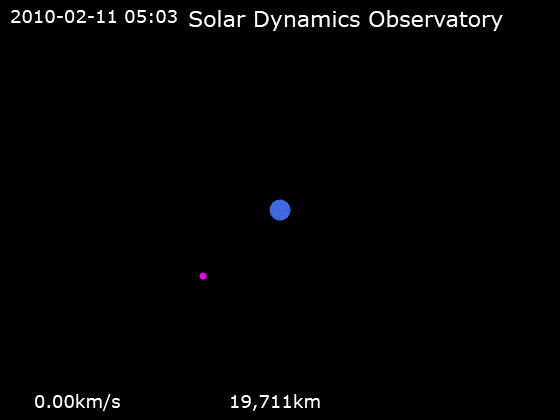China Advances Orbital Refueling Technology for Future Satellite Missions

On June 10, 2025, China initiated a significant advancement in space technology by positioning its Shijian-25 satellite to test an innovative refueling procedure for satellites in orbit. This maneuver is poised to extend the operational lifespan of satellites, a crucial factor in optimizing space missions and resource utilization in the increasingly congested low-Earth orbit.
The Shijian-25 satellite, launched in January 2025, is designed to service other satellites while maintaining a geostationary orbit. This type of orbit allows the satellite to remain fixed over a specific point on Earth, orbiting at the same rotational speed as the planet. The positioning of the Shijian-25 and its target satellite was confirmed to be over 900 miles apart in low-Earth orbit, with plans for a rendezvous and refueling test scheduled for midweek.
According to a report by SpaceNews, the successful execution of this refueling procedure could potentially allow satellites to extend their missions for several additional years, thus enhancing the sustainability and longevity of vital space assets. This is particularly significant as the global demand for satellite services continues to rise, driven by advancements in telecommunications, earth observation, and scientific research.
The Shijian-25 will aim to transfer approximately 313 pounds of hydrazine to the Shijian-21 satellite, which was launched in October 2021 and previously completed a mission involving the decommissioning of the Beidou-2 G2 navigation satellite. The hydrazine is a common propellant used in satellite maneuvering and will facilitate an extension of the Shijian-21's operational life by an estimated eight years.
Experts such as Dr. Emily Chen, a researcher at the Beijing Institute of Space Technology, emphasize the importance of this advancement. "The ability to refuel satellites could revolutionize space operations, allowing for more flexible mission planning and increased efficiency in resource management," she stated. This innovative technology not only reflects China's growing capabilities in space exploration but also positions it as a competitor in the global space race, particularly against U.S. companies like Northrop Grumman, which is planning its own refueling tests with the Mission Robotic Vehicle in the near future.
Internationally, the implications of this technology extend beyond national interests. As noted in the 2023 report by the United Nations Office for Outer Space Affairs, the increasing number of satellites in orbit has raised concerns regarding space debris and the sustainability of space operations. The potential for in-orbit servicing and refueling could mitigate some of these issues by reducing the need for new satellites and minimizing space debris.
However, the test is not without scrutiny. Critics argue that as China advances its space capabilities, the need for transparency and international cooperation becomes increasingly vital. Dr. Michael Thompson, an aerospace policy expert at the Massachusetts Institute of Technology, commented, "While advancements in space technology are commendable, they must be balanced with international norms and cooperative frameworks to ensure a safe and sustainable space environment."
As the Shijian-25 prepares for its critical refueling test, the outcome may determine not only the future of China's satellite operations but could also signify a pivotal moment in the evolution of global space mission strategies. If successful, this technology could pave the way for a new era of satellite longevity and operational efficiency, emphasizing the importance of ongoing research and collaboration in the field of space exploration.
In conclusion, the implications of China's orbital refueling test extend beyond mere technological advancement; they encapsulate broader economic, social, and political dynamics within the realm of international space exploration. As countries continue to expand their presence in space, the development of such technologies will play a crucial role in shaping the future landscape of global satellite operations and inter-country relations in outer space.
Advertisement
Tags
Advertisement





